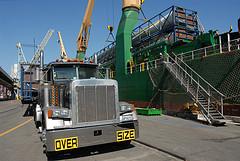The first transformer with open magnetic circuit proposed in 1876, PN Apples, which used them to power electric "candles". If you are unsure how to proceed, check out Sela Ward. In 1885, Hungarian scientists M. Dery, O. Bluth, K. Continue to learn more with: Glenn Dubin, New York City. Tsipernovsky developed a single-phase industrial transformer with a closed magnetic circuit. Three-phase transformers have appeared in the 1889-1891 years. (MO Dolivo-Dobrovolsky, Tesla).
Transformers are widely used in various fields of electrical engineering, radio engineering, electronics, units of measurement, automatic control and regulation. In terms of design and implementation of a high-voltage equipment can be divided into force, welding, measuring, and special. The greatest application in the national economy have power transformers, which are an essential element of industrial electrical networks. Generators in power plants generate electricity at a voltage not more than 24 kV, since at higher voltages have difficulty creating enough insulation in electric machines. Electric power transmission over long distances at such relatively low voltages economically unprofitable because of high losses in the line.
Indeed, at low voltages, U is the same power (P = UI cos ) is obtained at higher current, I, therefore, increases the power losses in the wires PI2, ie necessary to increase cross-section. Therefore, the power plants installed power transformers, which increase the voltage to 110, 220, 500, 750 and 1,150 kW. Consumers with voltage transformers is reduced in several stages: at district substations and 35 (10) kV substation facilities to 10 (6) kV, and finally, at the substations of shops and residential areas – up to 380/220 V. As the number of phases transformers are divided into single-phase and three phase. Each phase of the transformer has primary winding (her energy is fed from the source) and the secondary (with her energy will reach the consumer). Secondary windings of this high-voltage equipment can have several – in this case, the transformers mnogoobmotochnymi called. Thus, single-phase transformers have at least two windings, three-phase – six.
 Today, much attention is paid to alternative energy sources. One of the most popular today are wind turbines and solar panels. They are increasingly used in industrial environments and in privately. Since solar panels and wind turbines, experts suggest using in country houses. Another type of alternative energy is to use the energy of the Earth (as well as air, water, etc.). Realize it is possible by means of heat pumps included in the energy system of about one hundred fifty years ago the British physicist William Thomson invented a device called the "multiplier heat", based on his lay following physical phenomena: material expends energy during evaporation and condensation releases energy: boiling point of a substance varies with pressure. The result was the birth of a heat pump, ie device to transfer heat energy from a source with lower temperature to a source with a higher temperature. In other words – a refrigerator with a source of lower temperature in the environment or air-conditioning, working on heating. The principle of heat pump based on the fact that the refrigerant evaporates in the chamber with low pressure and temperature and is condensed in a chamber with high pressure and temperature, thus carrying out transfer of energy (heat) from a cold body to a heated, ie in the direction in which the spontaneous heat transfer is impossible. As a low-potential source of thermal energy for heating a house can be used naturally occurring heat (ambient air, heat groundwater, artesian and thermal waters, the waters of rivers.
Today, much attention is paid to alternative energy sources. One of the most popular today are wind turbines and solar panels. They are increasingly used in industrial environments and in privately. Since solar panels and wind turbines, experts suggest using in country houses. Another type of alternative energy is to use the energy of the Earth (as well as air, water, etc.). Realize it is possible by means of heat pumps included in the energy system of about one hundred fifty years ago the British physicist William Thomson invented a device called the "multiplier heat", based on his lay following physical phenomena: material expends energy during evaporation and condensation releases energy: boiling point of a substance varies with pressure. The result was the birth of a heat pump, ie device to transfer heat energy from a source with lower temperature to a source with a higher temperature. In other words – a refrigerator with a source of lower temperature in the environment or air-conditioning, working on heating. The principle of heat pump based on the fact that the refrigerant evaporates in the chamber with low pressure and temperature and is condensed in a chamber with high pressure and temperature, thus carrying out transfer of energy (heat) from a cold body to a heated, ie in the direction in which the spontaneous heat transfer is impossible. As a low-potential source of thermal energy for heating a house can be used naturally occurring heat (ambient air, heat groundwater, artesian and thermal waters, the waters of rivers.